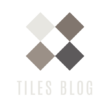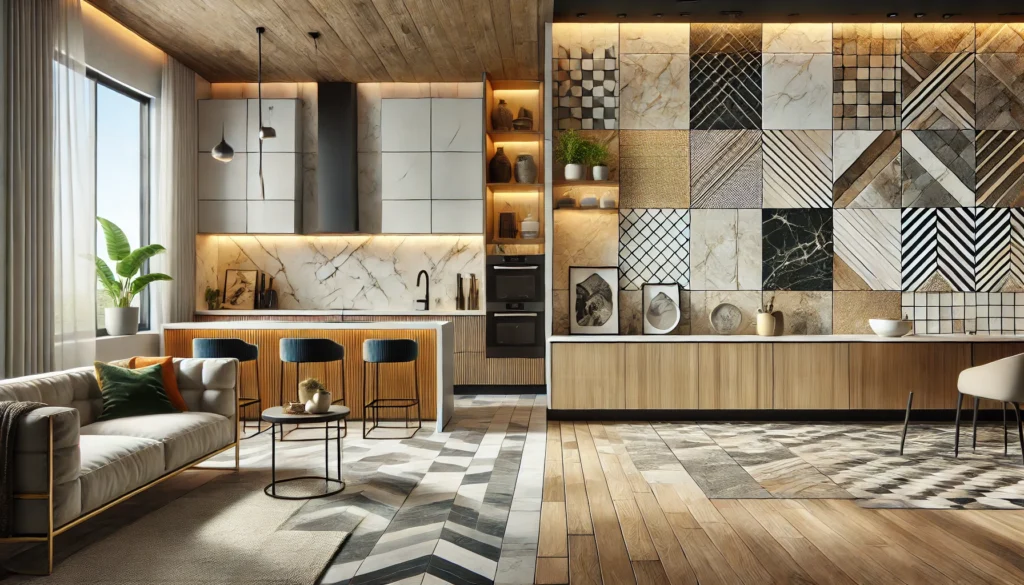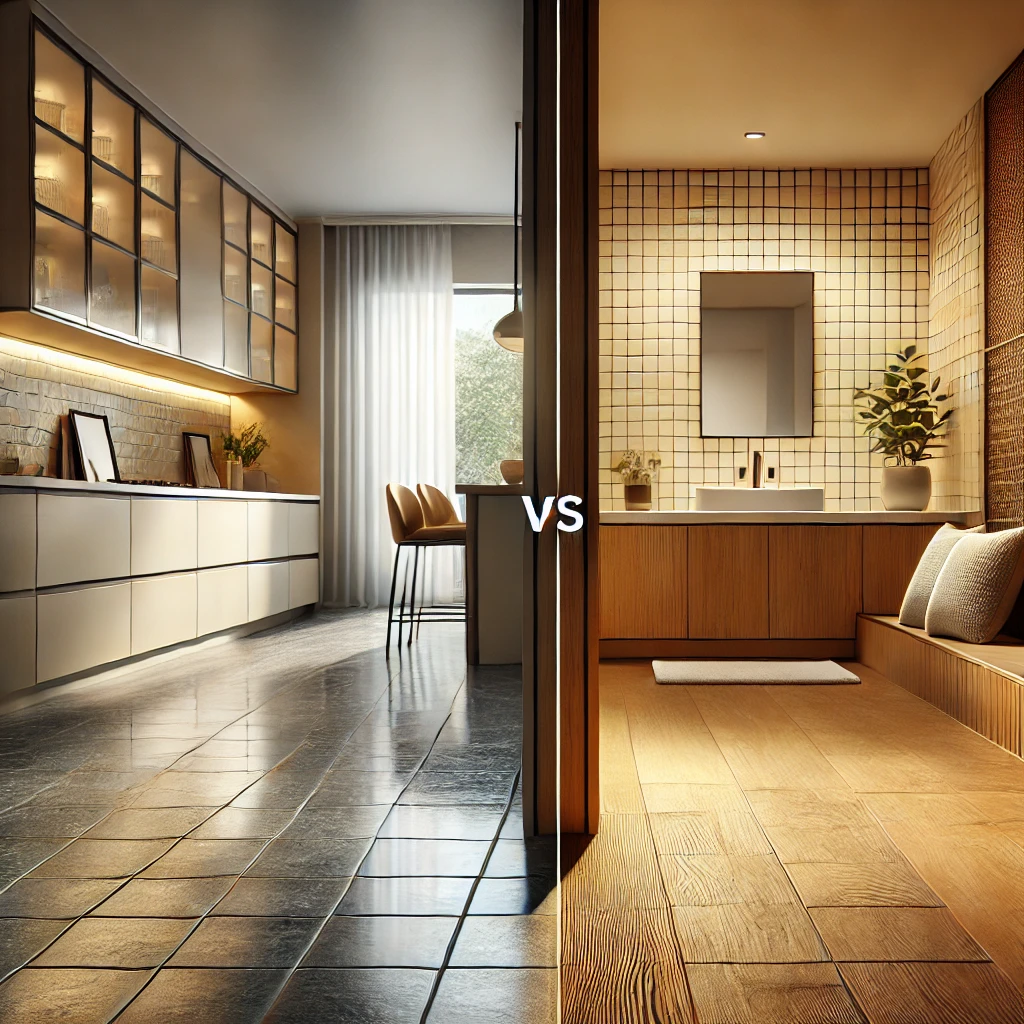Have you ever walked into a space and felt instantly transported to another world? That’s the magic of moroccan tiles—they don’t just decorate your walls and floors, they tell stories of ancient craftsmanship, cultural heritage, and artistic mastery that spans centuries.
Recent market research reveals that the global decorative tile market, with Moroccan tiles as a leading segment, reached $156.8 billion in 2024 and is projected to grow 6.2% annually through 2032. This explosive growth isn’t just about trend-following—it’s about homeowners discovering the transformative power of authentic moroccan tiles that blend exotic beauty with modern functionality.
But here’s what most people don’t realize: choosing the right moroccan tiles involves far more than picking pretty patterns. From understanding the difference between authentic zellige and mass-produced imitations to navigating installation challenges and maintenance requirements, there’s a whole world of knowledge that separates a disappointing renovation from a breathtaking transformation.
Whether you’re planning a complete home makeover or simply want to add a touch of Mediterranean charm to your kitchen backsplash, this comprehensive guide will take you on a journey through everything you need to know about moroccan tiles. We’ll explore their fascinating history, decode the different types available, tackle common problems head-on, and provide you with insider tips that only industry professionals usually know.
Understanding the Moroccan Tile Phenomenon: Why These Ancient Art Forms Are Dominating Modern Design
The Cultural Legacy Behind Every Tile
When you install moroccan tiles in your home, you’re not just adding decoration—you’re bringing in 1,300 years of artistic tradition. The story begins in 711 A.D. when the Moors conquered Spain and introduced their distinctive tile-making techniques to the Iberian Peninsula. These weren’t just functional building materials; they were expressions of Islamic art, mathematics, and spirituality.
Moroccan tiles, particularly the famous zellige tiles, originated from the city of Fez around the 10th century. The word “zellige” comes from the Arabic “zalaja,” meaning “to slide,” referring to the smooth, glazed surface that craftsmen achieved through their meticulous processes.
Why Moroccan Tiles Are Experiencing a Renaissance
What makes moroccan tiles so irresistible in today’s design world? According to interior design trend reports, Moroccan tiles represent the perfect intersection of several major 2025 design movements: maximalist patterns, artisanal craftsmanship, and cultural authenticity.
Think about it—in our digital age, there’s something deeply satisfying about owning something made entirely by human hands. Each moroccan tile carries the fingerprints of its maker, literally and figuratively. Unlike machine-made tiles that achieve sterile perfection, authentic moroccan tiles celebrate beautiful imperfections that make every installation unique.
The Psychology of Pattern: How Moroccan Tiles Affect Your Well-being
Ever wonder why moroccan tiles make spaces feel so calming yet energizing? Research in environmental psychology shows that geometric patterns, like those found in traditional moroccan tiles, can reduce stress levels by up to 15% while improving focus and creativity. The mathematical precision underlying these seemingly complex designs creates a sense of order that our brains find deeply satisfying.
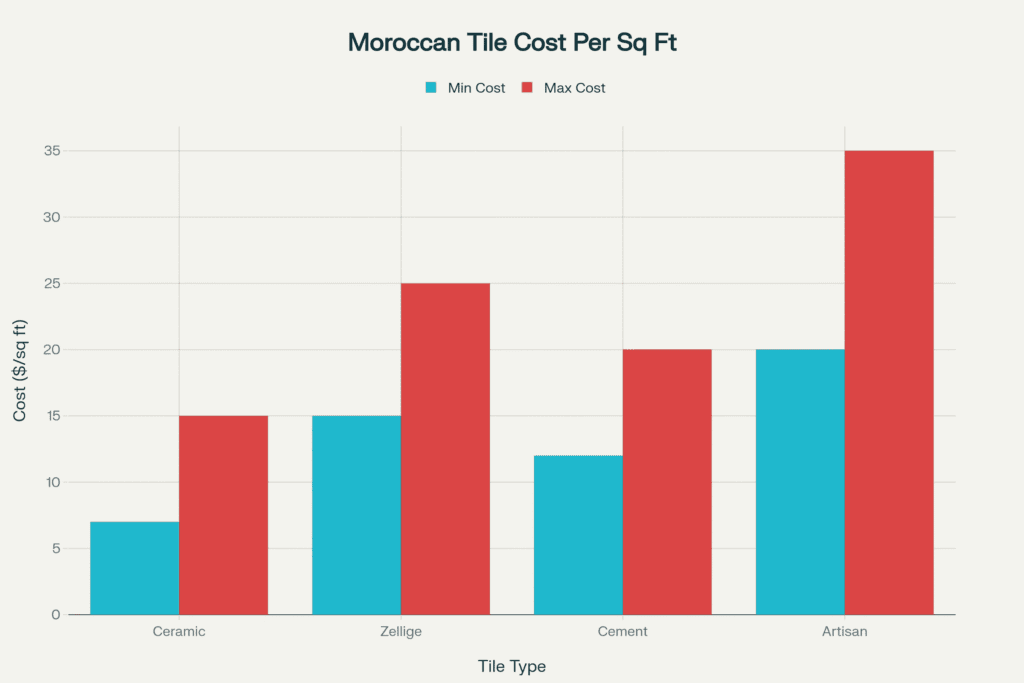
The Hidden Challenges of Moroccan Tile Selection: What Most Homeowners Get Wrong
The Authentication Problem: Real vs. Reproduction
Here’s where most homeowners stumble: not all tiles labeled “Moroccan” are actually from Morocco or made using traditional methods. The market is flooded with mass-produced imitations that look similar from a distance but lack the soul and durability of authentic moroccan tiles.
Authentic zellige tiles are exclusively made from clay found near Fez, Morocco, and fired in traditional wood kilns. Mass-produced alternatives often use generic clay and gas-fired kilns, resulting in tiles that lack the characteristic color depth and texture variations that make real moroccan tiles so captivating.
Installation Nightmares: Why DIY Isn’t Always the Answer
Unlike standard ceramic tiles, moroccan tiles present unique installation challenges that can turn a dream project into a costly nightmare. Professional installers report that moroccan tile projects take 40-60% longer than standard tile installations due to the handmade irregularities and specialized techniques required.
The problems begin with the tiles themselves:
- Surface variations of up to 2-3mm between tiles
- Irregular edges requiring skilled cutting and fitting
- Color variations that need careful blending
- Specialized grout requirements for proper adhesion
Maintenance Misconceptions: The Care Your Investment Demands
Many homeowners fall in love with the appearance of moroccan tiles but underestimate their maintenance requirements. Traditional zellige tiles require different care protocols than standard ceramic tiles, and using the wrong cleaning products can permanently damage their glazed surfaces.
The biggest maintenance mistakes include:
- Using acidic cleaners that etch the glaze
- Applying too much pressure during cleaning
- Neglecting proper sealing for unglazed varieties
- Dragging heavy furniture across tile surfaces
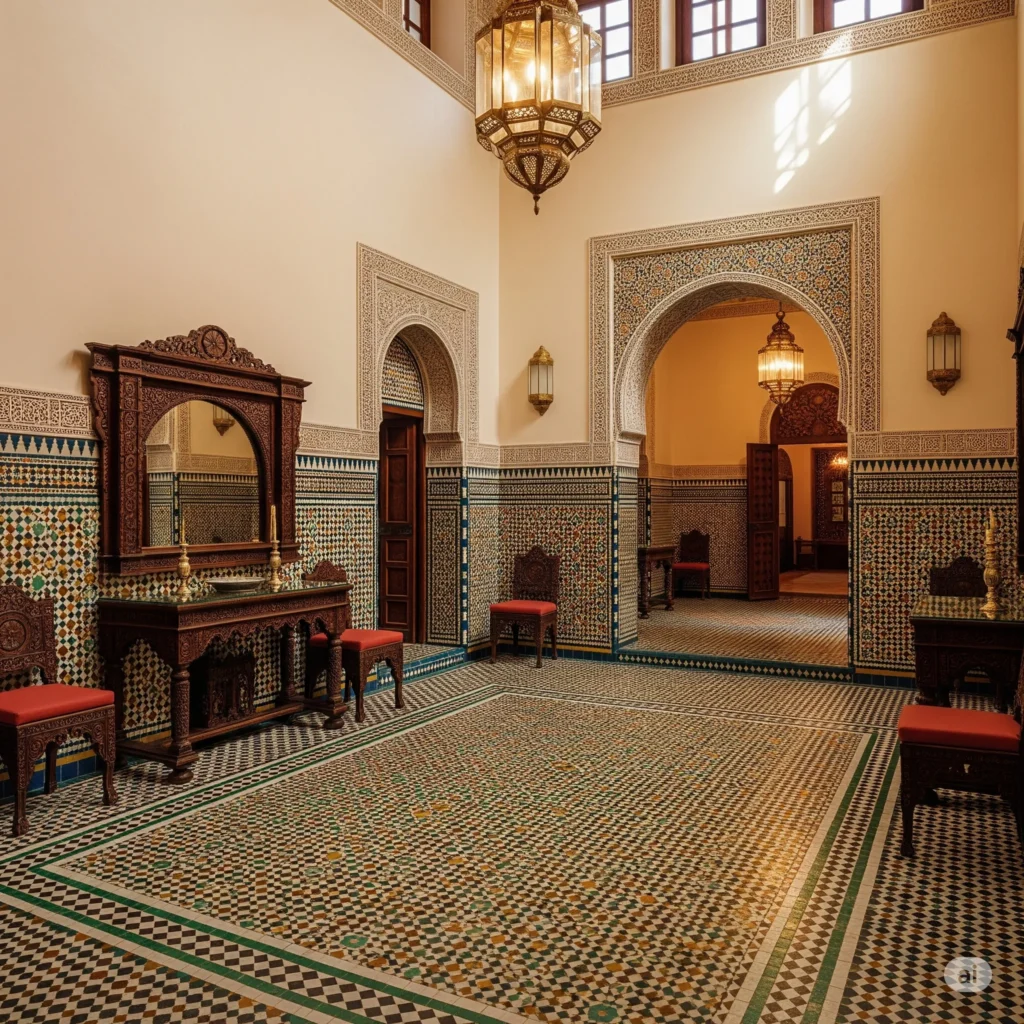
Decoding Moroccan Tile Types: Your Complete Selection Guide
Zellige Tiles: The Crown Jewel of Moroccan Craftsmanship
Zellige tiles represent the pinnacle of moroccan tile artistry. These handcrafted gems are made from natural clay extracted exclusively from the Salé region near Fez, Morocco. The manufacturing process hasn’t changed in centuries: skilled artisans shape each tile by hand, apply natural glazes, and fire them in wood-burning kilns.
What makes zellige tiles special:
- Each tile is unique with natural variations
- Rich, depth-filled colors that change with light
- Slightly irregular surfaces that create visual texture
- Exceptional durability when properly installed
- 22 traditional colors, from classic white to deep cobalt blue
Bejmat Tiles: The Elegant Elongated Option
Bejmat tiles offer a different aesthetic while maintaining moroccan authenticity. These rectangular tiles, typically measuring 2×6 inches, create sophisticated patterns that work beautifully for both floors and walls. Unlike zellige tiles, bejmat tiles are unglazed, showcasing the natural beauty of Moroccan clay.
Bejmat tile characteristics:
- Natural terracotta color with subtle variations
- Matte finish that’s slip-resistant
- Perfect for high-traffic areas
- Often laid in herringbone or running bond patterns
- More affordable than zellige while maintaining authenticity
Cement Moroccan Tiles: Modern Durability Meets Traditional Design
For homeowners who love moroccan tile aesthetics but need modern durability, cement moroccan tiles offer the perfect compromise. These tiles reproduce traditional Moroccan patterns using contemporary cement-based manufacturing techniques.
Cement tile advantages:
- Superior durability for high-traffic areas
- Consistent sizing for easier installation
- Water-resistant properties
- Wide range of colors and patterns
- More budget-friendly than handmade options
Strategic Placement: Where Moroccan Tiles Make the Biggest Impact
Kitchen Applications: Creating Culinary Theater
The kitchen backsplash remains the most popular application for moroccan tiles, and for good reason. A well-designed moroccan tile backsplash can increase your home’s resale value by 8-12% while creating a stunning focal point.
Successful kitchen moroccan tile strategies:
- Use larger moroccan tiles for small kitchens to avoid overwhelming the space
- Combine moroccan tiles with neutral countertops for balance
- Consider maintenance requirements near cooking areas
- Plan for adequate lighting to showcase tile details
Bathroom Transformations: Spa-Like Serenity
Bathrooms offer unique opportunities for moroccan tile creativity.
From accent walls to complete room installations, moroccan tiles can transform utilitarian bathrooms into exotic retreats.
Bathroom moroccan tile best practices:
- Ensure proper waterproofing behind tiles
- Use appropriate grout for wet conditions
- Consider slip-resistance for floor applications
- Plan for adequate ventilation to prevent moisture issues
Floor Applications: Foundation of Style
Moroccan tiles create stunning floor installations that serve as room anchors. However, floor applications require careful consideration of durability and maintenance factors.
Floor installation considerations:
- Choose appropriate thickness for subfloor conditions
- Plan for thermal expansion in large areas
- Consider comfort underfoot for living areas
- Factor in cleaning and maintenance requirements
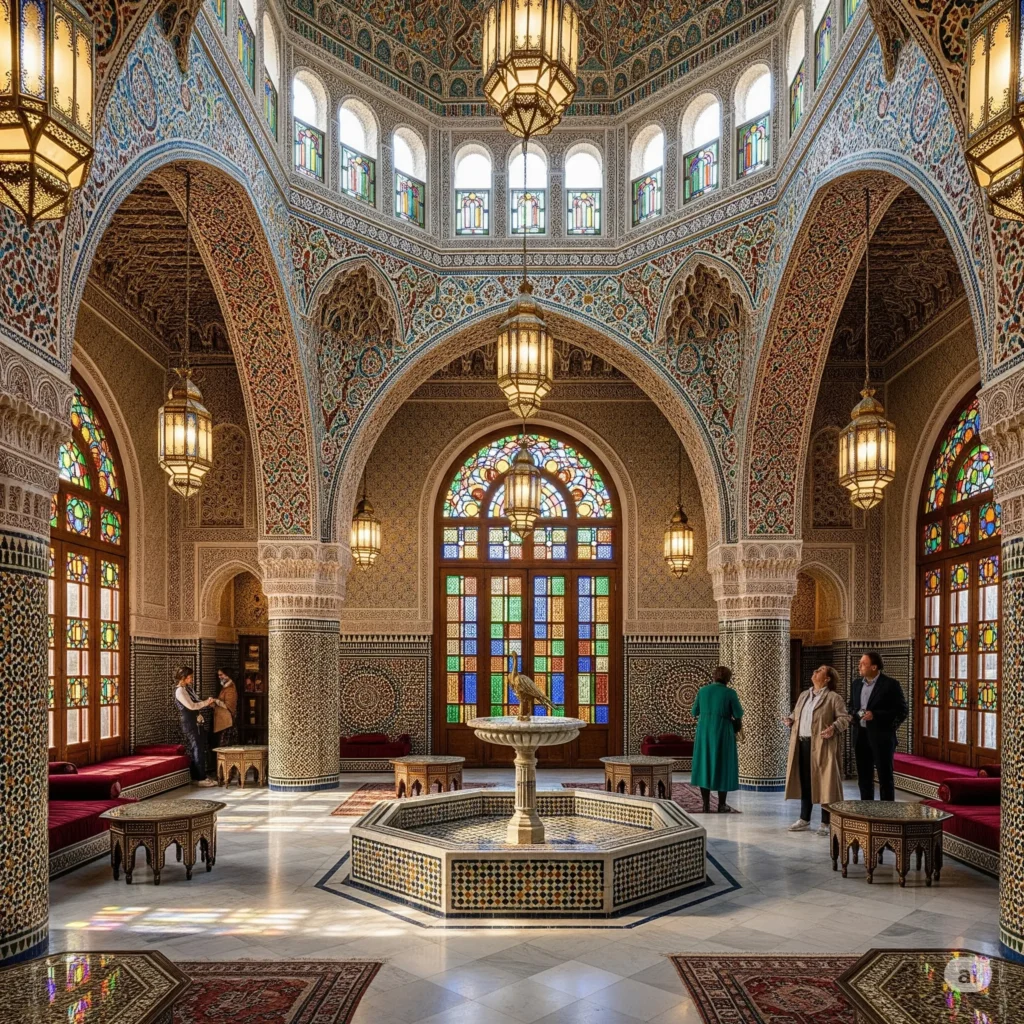
Installation Mastery: Professional Techniques for Perfect Results
Surface Preparation: The Foundation of Success
Proper surface preparation accounts for 60% of moroccan tile installation success. Unlike standard tiles, moroccan tiles require perfectly level, clean surfaces due to their thickness variations and handmade nature.
Critical preparation steps:
- Check subfloor levelness (±1/8″ in 10 feet)
- Remove all debris, grease, and old adhesive
- Prime porous surfaces for better adhesion
- Install appropriate underlayment if needed
- Mark layout lines for pattern alignment
Adhesive Selection: Bonding for the Long Term
The adhesive choice can make or break your moroccan tile installation. Traditional thin-set mortars often fail with handmade moroccan tiles due to their irregular back surfaces.
Recommended adhesive approaches:
- Use high-bond, flexible adhesives for wall applications
- Apply double-spread technique (adhesive on wall and tile back)
- Choose white adhesives to avoid color telegraphing
- Allow for extended working time due to placement complexity
Layout Strategy: Pattern Planning for Perfection
Unlike uniform manufactured tiles, moroccan tiles require careful layout planning to achieve optimal visual results. Professional installers recommend dry-laying the entire project before beginning installation.
Layout best practices:
- Start from room center and work outward
- Mix tiles from different batches for color blending
- Plan cut tile locations to minimize waste
- Consider lighting direction for pattern visibility
- Account for grout line variations in spacing
Design Integration: Making Moroccan Tiles Work with Your Style
Color Psychology in Moroccan Tile Selection
The colors you choose for your moroccan tiles dramatically impact your space’s emotional atmosphere. Understanding color psychology helps create the exact ambiance you desire.
Popular moroccan tile color combinations:
- Blue and white: Creates calming, coastal vibes
- Terracotta and cream: Warm, earthbound feeling
- Green and gold: Luxurious, nature-inspired
- Black and white: Bold, contemporary contrast
- Multicolored patchwork: Energetic, eclectic charm
Pattern Mixing: Advanced Design Techniques
Experienced designers often combine different moroccan tile patterns within single projects. This sophisticated approach requires understanding scale, color relationships, and visual weight distribution.
Successful pattern mixing strategies:
- Vary scale between patterns (large with small)
- Maintain consistent color palette
- Use neutral areas for visual rest
- Balance busy patterns with solid colors
- Consider viewing distances in pattern selection
Contemporary Integration: Moroccan Tiles in Modern Settings
One of the biggest misconceptions about moroccan tiles is that they only work in traditional settings. Modern designers increasingly integrate moroccan tiles into minimalist, industrial, and Scandinavian interiors.
Modern moroccan tile applications:
- Single accent walls in neutral rooms
- Geometric moroccan tiles in contemporary kitchens
- Monochrome moroccan tile patterns for sophisticated contrast
- Mixed material combinations (moroccan tiles with concrete, steel, glass)
Budget Planning: Maximizing Value in Your Moroccan Tile Investment
Understanding the True Cost of Moroccan Tiles
Moroccan tile projects involve more than just material costs. When planning your budget, consider all project elements to avoid unpleasant surprises.
Complete cost breakdown:
- Tile materials: 40-50% of total project cost
- Installation labor: 30-35% of total cost
- Preparation work: 10-15% of total cost
- Additional materials (adhesive, grout, sealers): 5-10%
- Contingency fund: 10-15% for unexpected issues
Value Engineering: Getting More for Less
Smart shoppers can achieve stunning moroccan tile results without breaking the bank. The key lies in strategic compromises and insider knowledge.
Money-saving strategies:
- Mix expensive authentic tiles with quality reproductions
- Use moroccan tiles as accents rather than full coverage
- Choose larger tile formats to reduce labor costs
- Buy directly from importers to skip retail markups
- Time purchases with end-of-season sales
ROI Considerations: Moroccan Tiles as Investment
Well-executed moroccan tile installations consistently rank among the highest ROI home improvements. Real estate professionals report that unique, high-quality tile work appeals strongly to upscale buyers.
Value-adding installation locations:
- Primary bathroom renovations: 80-90% ROI
- Kitchen backsplashes: 85-95% ROI
- Foyer/entry areas: 70-80% ROI
- Master bedroom accent walls: 60-70% ROI
Maintenance Mastery: Protecting Your Moroccan Tile Investment
Daily Care Routines: Preserving Beauty Long-term
Proper maintenance extends moroccan tile lifespan while maintaining their stunning appearance. Daily care routines prevent small issues from becoming major problems.
Essential daily maintenance:
- Sweep or vacuum loose debris immediately
- Wipe spills promptly to prevent staining
- Use microfiber cloths for cleaning (never abrasive materials)
- Avoid acidic cleaning products (vinegar, lemon-based cleaners)
- Dry surfaces completely after cleaning
Deep Cleaning Protocols: Professional-level Care
Monthly deep cleaning maintains moroccan tile luster and prevents buildup. Different tile types require specific cleaning approaches.
Zellige tile deep cleaning:
- Remove surface dust with dry microfiber cloth
- Apply pH-neutral cleaner with soft sponge
- Rinse thoroughly with clean water
- Dry completely with lint-free cloths
- Apply protective wax if recommended by manufacturer
Cement tile deep cleaning:
- Vacuum or sweep thoroughly
- Mop with appropriate stone cleaner
- Rinse with clean water
- Apply sealer annually for protection
Damage Prevention: Avoiding Common Pitfalls
Prevention costs far less than repair when it comes to moroccan tiles. Understanding what threatens your tiles helps you avoid costly mistakes.
Major damage causes:
- Heavy furniture dragged across surfaces
- High heels on soft tile surfaces
- Thermal shock from extreme temperature changes
- Chemical exposure from inappropriate cleaners
- Structural settling causing tile cracking
Environmental Sustainability: The Green Choice in Moroccan Tiles
Traditional Craftsmanship as Eco-Friendly Practice
Authentic moroccan tiles represent one of the most environmentally sustainable flooring options available. Traditional manufacturing methods have minimal environmental impact compared to modern industrial processes.
Environmental benefits of authentic moroccan tiles:
- Natural clay materials require no chemical processing
- Wood-fired kilns use renewable fuel sources
- Handcrafted production eliminates industrial machinery energy use
- Local production reduces transportation carbon footprint
- Long lifespan reduces replacement frequency
Modern Sustainable Alternatives
For environmentally conscious consumers, modern moroccan tile manufacturers offer eco-friendly alternatives. These options maintain moroccan aesthetics while meeting contemporary sustainability standards.
Sustainable moroccan tile options:
- Recycled content tiles using post-consumer materials
- Low-VOC glazes and sealers
- Energy-efficient kiln technologies
- Water recycling in manufacturing processes
- Locally sourced materials when possible
End-of-Life Considerations
Unlike vinyl or laminate flooring, moroccan tiles offer excellent end-of-life options. This sustainability factor adds long-term value beyond initial installation.
Sustainable disposal options:
- Natural clay tiles break down completely
- Tiles can be crushed for aggregate use
- Artistic tiles may have resale value
- Reclamation for future projects
DIY Projects: Adding Moroccan Flair on Any Budget
Small-Scale Projects for Beginners
You don’t need a complete renovation to enjoy moroccan tile beauty. Small DIY projects let you experiment with moroccan tile aesthetics while building skills.
Beginner-friendly moroccan tile projects:
Moroccan Tile Serving Tray
- Materials: Wooden tray, small moroccan tiles, grout, sealant
- Time required: 4-6 hours over 2 days
- Skill level: Beginner
- Cost: $25-45
Moroccan Tile Coasters
- Materials: Cork backing, small tiles, adhesive
- Time required: 2-3 hours
- Skill level: Easy
- Cost: $15-25
Moroccan Tile Picture Frames
- Materials: Plain frames, tile pieces, grout
- Time required: 3-4 hours
- Skill level: Beginner
- Cost: $20-35
Intermediate DIY Applications
Once you’ve mastered small projects, intermediate applications offer more dramatic results. These projects require more skill but deliver professional-looking outcomes.
Intermediate moroccan tile projects:
Bathroom Accent Wall
- Preparation: Proper wall prep and waterproofing
- Installation: Careful layout and tile spacing
- Finishing: Professional grouting and sealing
- Timeline: Weekend project
- Investment: $200-500
Kitchen Island Accent
- Design: Pattern planning and tile cutting
- Installation: Precise measurements and alignment
- Protection: Appropriate sealers for kitchen use
- Timeline: 2-3 days
- Investment: $300-600
Advanced DIY Challenges
Experienced DIYers can tackle larger moroccan tile projects with proper planning. These projects require significant skill but offer maximum impact.
Advanced project considerations:
- Proper tool investment for professional results
- Detailed planning and material calculations
- Understanding of structural and moisture issues
- Willingness to hire professionals for difficult aspects
- Patience for multi-day or multi-week projects
Troubleshooting Common Problems: Expert Solutions
Installation Issues and Fixes
Even professional installations sometimes encounter problems. Understanding common issues and solutions helps you address problems quickly.
Common installation problems:
Lippage (uneven tile surfaces)
- Cause: Subfloor irregularities or poor installation technique
- Prevention: Proper surface preparation and leveling systems
- Fix: Grinding high spots or professional reinstallation
Grout line inconsistencies
- Cause: Natural variations in handmade tiles
- Prevention: Careful tile selection and spacing
- Fix: Strategic regrouting or tile replacement
Color matching issues
- Cause: Natural variations or different production batches
- Prevention: Order extra tiles and blend during installation
- Fix: Selective tile replacement or pattern adjustment
Long-term Maintenance Challenges
Moroccan tiles may develop issues over time even with proper care. Early identification and treatment prevent minor problems from becoming major repairs.
Common long-term issues:
Grout discoloration
- Causes: Moisture, cleaning product residue, wear
- Prevention: Regular cleaning and proper ventilation
- Solution: Professional grout cleaning or replacement
Tile cracking
- Causes: Structural movement, impact damage, thermal stress
- Prevention: Proper installation and expansion joints
- Solution: Individual tile replacement or crack repair
Surface wear patterns
- Causes: Heavy foot traffic, improper cleaning
- Prevention: Appropriate tile selection for use area
- Solution: Refinishing or replacement depending on severity
Emergency Repairs: Quick Fixes That Work
Sometimes moroccan tiles need immediate attention. Having quick fix solutions prevents small problems from causing extensive damage.
Emergency repair techniques:
- Nail polish for small chips (matching color)
- Ceramic filler for larger chips
- Temporary grout repair with caulk
- Protective covering for damaged areas
- Professional consultation for major damage
Future Trends: The Evolution of Moroccan Tiles
Technology Integration in Traditional Crafts
Modern technology increasingly supports traditional moroccan tile making without compromising authenticity. These innovations improve quality and consistency while preserving artisanal character.
Emerging technologies:
- Digital color matching for better batch consistency
- Improved kiln controls for even firing
- Quality scanning systems for defect detection
- Sustainable energy systems for production facilities
- Advanced packaging to reduce shipping damage
Design Evolution: Modern Interpretations
Contemporary designers continue expanding moroccan tile applications. 2025 trends show increasing integration with other materials and styles.
Trending moroccan tile applications:
- Mixed material combinations (metal, glass, wood)
- Oversized format adaptations
- Digital printing of traditional patterns on modern substrates
- Smart integration (heated floor compatibility)
- Outdoor weather-resistant formulations
Sustainability Innovations
Environmental consciousness drives innovation in moroccan tile manufacturing. New sustainable practices maintain tradition while reducing environmental impact.
Sustainability innovations:
- Carbon-neutral kiln technologies
- Recycled content integration
- Water-free cleaning processes
- Biodegradable packaging materials
- Local clay sourcing programs
Regional Variations: Understanding Moroccan Tile Diversity
Fez Tradition: The Original Artisans
Fez remains the heart of authentic moroccan tile production. Tiles from this region represent the gold standard of quality and authenticity.
Fez tile characteristics:
- Distinctive clay composition from local deposits
- Traditional firing techniques unchanged for centuries
- Master craftsmen trained through apprenticeship programs
- Limited color palette based on historical formulations
- Premium pricing reflecting authenticity and quality
Modern Production Centers
Other regions now produce moroccan tiles using traditional techniques. These alternatives offer authentic quality at more accessible prices.
Alternative production regions:
- Salé: Known for specific clay characteristics
- Tétouan: Specializes in certain color ranges
- Meknes: Focus on larger format tiles
- Modern facilities: Combine tradition with quality control
International Interpretations
Moroccan tile aesthetics inspire global manufacturers. These interpretations make moroccan tile looks accessible worldwide.
International options:
- Spanish azulejo tiles with moroccan patterns
- Portuguese adaptations
- Turkish geometric interpretations
- Italian modern interpretations
- Asian manufacturing with moroccan designs
Professional vs. DIY: Making the Right Choice
When to Hire Professionals
Certain moroccan tile projects absolutely require professional installation. Understanding these situations saves time, money, and frustration.
Professional installation required:
- Large area installations (over 100 sq ft)
- Structural modifications
- Waterproofing requirements
- Complex pattern layouts
- High-value tile materials
- Commercial applications
DIY-Friendly Applications
Some moroccan tile projects work well for experienced DIYers. Success requires honest skill assessment and proper preparation.
Good DIY candidates:
- Small accent areas
- Non-critical applications
- Forgiving pattern layouts
- Standard tile formats
- Areas where imperfections add character
Hybrid Approaches
Smart homeowners often combine professional and DIY elements. This approach controls costs while ensuring critical work quality.
Effective hybrid strategies:
- Professional prep work, DIY installation
- DIY tile work, professional finishing
- Professional layout, DIY execution
- DIY small areas, professional large spaces
Transform Your Space Today: Your Action Plan for Moroccan Tile Success
The journey through the world of moroccan tiles reveals a design element that transcends mere decoration. These handcrafted treasures carry the weight of history, the beauty of mathematical precision, and the soul of artisan craftsmanship into your modern home.
The moroccan tile market will continue expanding, with projections showing 15% annual growth through 2027 as homeowners increasingly seek authentic, artisanal elements. This isn’t just a trend—it’s a movement toward meaningful design that connects us to cultural heritage while creating spaces of extraordinary beauty.
Your moroccan tile project doesn’t have to be overwhelming. Start with these proven steps:
Phase 1: Vision Development (Week 1-2)
- Research styles and patterns that resonate with your aesthetic
- Assess your space and determine optimal moroccan tile applications
- Set realistic budget parameters including installation and materials
- Gather inspiration images and create a vision board
Phase 2: Technical Planning (Week 3-4)
- Measure spaces accurately and calculate tile requirements plus 15% extra
- Research suppliers and obtain samples of preferred moroccan tiles
- Get quotes from qualified installers experienced with moroccan tiles
- Plan timeline including material delivery and installation scheduling
Phase 3: Execution Excellence (Implementation Period)
- Order materials with appropriate lead times
- Coordinate professional installation or prepare for DIY execution
- Monitor progress and address issues promptly
- Document the process for future reference and maintenance
Phase 4: Long-term Success (Ongoing)
- Implement proper maintenance routines from day one
- Schedule professional cleaning annually for high-traffic areas
- Keep spare tiles for future repairs
- Enjoy the transformation and plan additional moroccan tile applications
Remember, moroccan tiles represent more than a design choice—they’re an investment in beauty, craftsmanship, and cultural connection that will enrich your daily life for decades. Whether you start with a small accent project or commit to a full room transformation, the key is taking that first step toward bringing these magical tiles into your world.
The perfect moroccan tile for your project is waiting. The only question is: are you ready to discover the transformative power of these ancient art forms in your modern life?
Frequently Asked Questions About Moroccan Tiles
1. How can I tell if moroccan tiles are authentic or mass-produced imitations?
Authentic moroccan tiles, especially zellige, have natural variations in color, slight surface irregularities, and slightly uneven edges that reflect their handmade nature. Mass-produced tiles appear perfectly uniform. Real zellige tiles from Fez also feel different—they’re denser and have a distinctive glazed finish that catches light uniquely.
2. What’s the average lifespan of moroccan tiles in high-traffic areas?
High-quality moroccan tiles, when properly installed and maintained, can last 50-100 years in residential applications. Zellige tiles actually improve with age as their glazes develop deeper patina. Even high-traffic areas like kitchen floors show minimal wear after 20-30 years when appropriate tiles are selected and properly maintained.
3. Can moroccan tiles be installed over existing tile or do they require complete removal?
While possible in some cases, installing moroccan tiles over existing tile is generally not recommended due to height changes, adhesion issues, and the weight of handmade tiles. Most professional installers recommend complete removal of existing tiles to ensure proper substrate preparation and long-term installation success.
4. Are moroccan tiles suitable for outdoor applications in cold climates?
Traditional zellige tiles are not recommended for freeze-thaw climates as they can crack from thermal expansion. However, modern cement moroccan tiles and specially formulated outdoor versions can handle cold weather applications. Always verify freeze-thaw ratings and use appropriate installation methods for outdoor moroccan tile projects.
5. How much should I budget for professional moroccan tile installation versus standard ceramic tiles?
Professional moroccan tile installation typically costs 40-60% more than standard ceramic tile due to specialized techniques required, longer installation time, and the need for experienced craftsmen. Budget $8-15 per square foot for installation beyond material costs, compared to $5-8 per square foot for standard tiles. However, the investment pays off in durability and visual impact.
